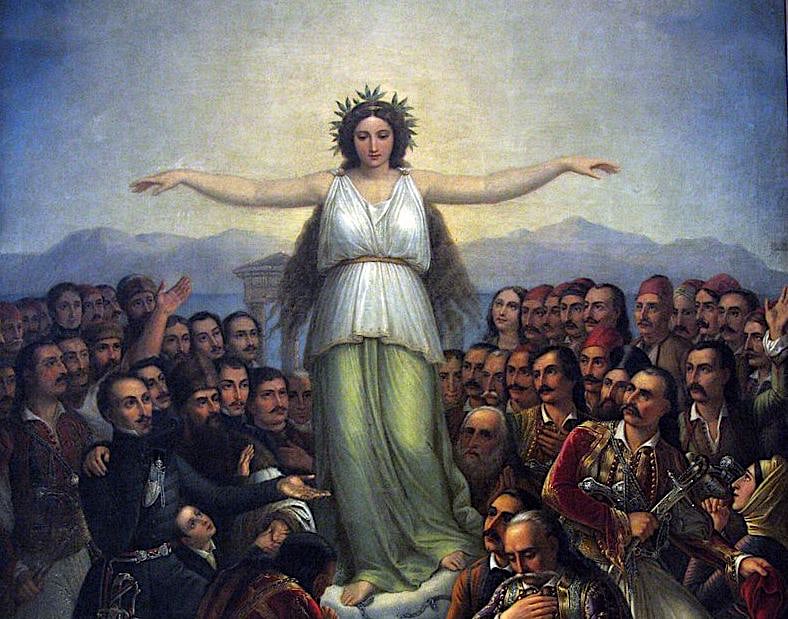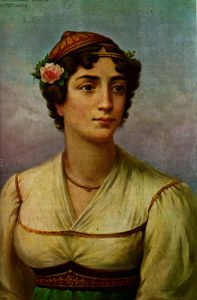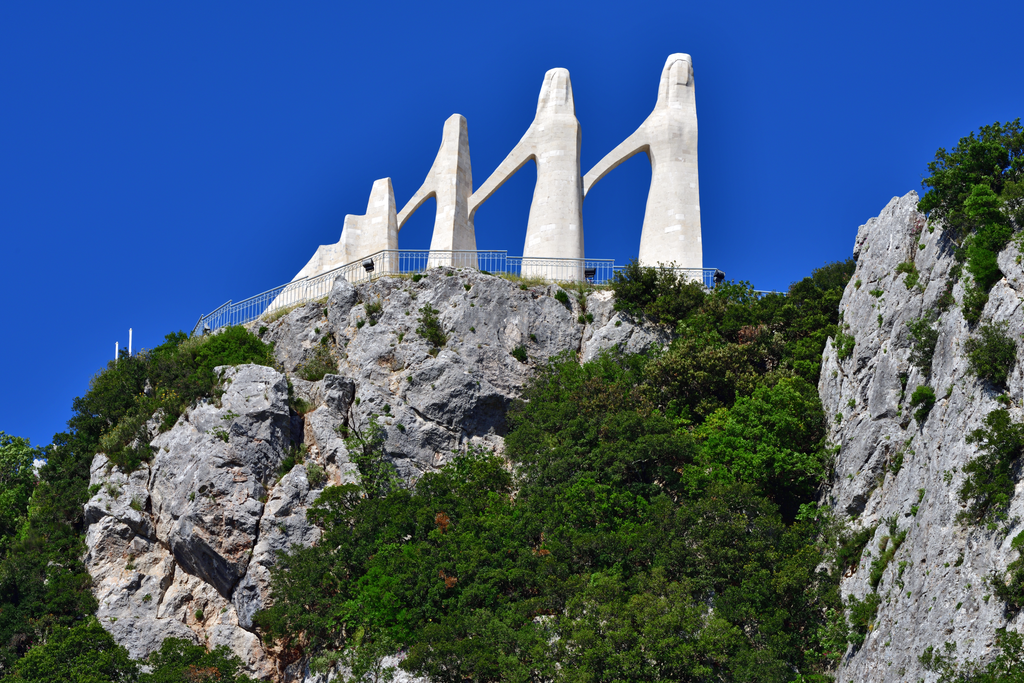
The role that Greek women played in the Greek War of Independence against the Ottoman Empire is not to be overlooked, as these heroines helped shape the course of Greece’s fight for freedom.
Several women stand out as having influenced the Greek War of Independence, while others– who are nameless — will always be remembered in the hearts and stories of the Greek people for their bravery and as revered martyrs.
Let’s take a look at some of the most memorable among these women:
Laskarina Bouboulina: renowned heroine of the Greek War of Independence

One of the most renowned heroines of the Greek War of Independence, Bouboulina was a patriot to her last breath.
She was born in May of 1771 in a prison in Constantinople and led a most unconventional life for her times.
Laskarina was married twice and inherited a fortune due to her marriages. There are reports that in 1819 Bouboulina joined the “Filiki Etaireia” (Society of Friends), the underground organization preparing to facilitate a revolution against Ottoman rule to liberate Greece.
Bouboulina went on to become a Greek naval commander in the Greek War of Independence. On March 13, 1821 she raised the Greek flag, which was based on the flag of the Comnenus dynasty of Byzantine emperors, on the mast of her ship, and led her fleet of eight ships to Nafplio, where she started a naval blockade.
Her wealth and fortune were a great asset, and she spent most of her riches on supplying ammunition and food for the sailors and soldiers under her command. She would go on to participate in other naval blockades and the capture of Monemvasia and Pylos. In 1825, however, she was killed by an unknown assassin on the balcony of her house on Spetses during a family feud.
Manto Mavrogenous, a fighter for the cause of Greek freedom

Born in 1796 in Trieste, Italy, which was at the time part of the Austrian Empire, Mavrogenous moved to Paros with her family in 1809 and joined the Filiki Etaireia in 1820 when she learned from her father, who was already a member of the organization, that they were preparing a revolution.
She was wealthy and well-educated, and convinced her friends to donate their money in efforts to increase the weaponry for the Greeks fighting in the revolution, appealingto wealthy women as far away as Paris to side with the Greeks.
Mavrogenous first went to Mykonos to invite leaders to join in the revolution.
Soon afterward, she left her family in 1823 and moved to Nafplio to fight at the center of the conflict. She stayed in Nafplion after the war concluded, and was granted the rank of Lieutenant General by Kapodistrias. After Kapodistrias’ assassination, Mavrogenous returned to Mykonos and lost her life to typhoid fever in July of 1848.
Rallou Karatza was a princess, actress, and revolutionary
Born a princess in 1799, Karatza became an actress, theater director and translator. She was a participant in the Greek War of Independence, as it is rumored that she too became a member of the Filiki Etaireia, using her influence as a stage actress to help the revolution.
Karatza translated and performed plays from Western Europe in the “Cişmeaua Roşie” in Bucharest, where she became a valuable weapon of propaganda for the revolution. Reports say that she died in 1870.

The “Mesolongitisses,” heroines who defended Greece in the War of Independence
The women of Messolonghi, or “Mesolongitisses” are remembered as the brave heroines who, during the Greek War of Independence, helped in the efforts to liberate Greece from the Turks in many ways.
They not only defended western Greece throughout the long siege of the area, they also helped the soldiers by transporting materials to build forts, such as wood and tools, and helped the wounded to recover. During the exodus, many of the women of Missolonghi perished alongside the soldiers, as they were massacred, captured or committed suicide to escape torture or enslavement at the hands of their enemy.

The “Souliotisses” chose death over capture
The women of Souli, called “Souliotisses” are known for their bravery in fighting as well as for being martyrs. They took part in the military operations of northern Greece and even threw boulders from high cliffs onto the Turks below during battles.
In December of 1803, at the “Dance of Zalongo” these women threw themselves off the high cliffs where they once had thrown rocks.They chose to commit suicide rather than be captured by the Turks.
See all the latest news from Greece and the world at Greekreporter.com. Contact our newsroom to report an update or send your story, photos and videos. Follow GR on Google News and subscribe here to our daily email!



